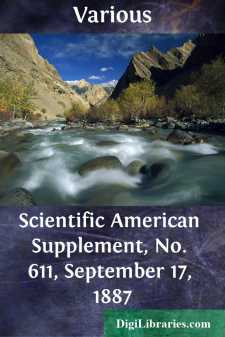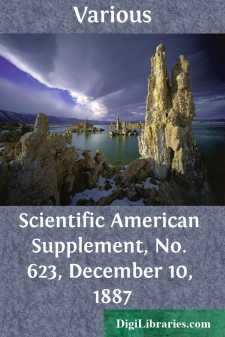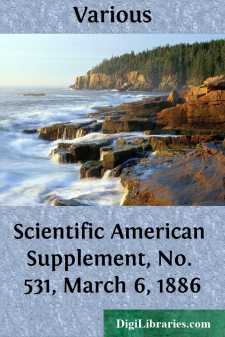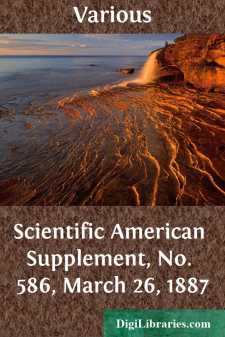Categories
- Antiques & Collectibles 13
- Architecture 36
- Art 48
- Bibles 22
- Biography & Autobiography 813
- Body, Mind & Spirit 142
- Business & Economics 28
- Children's Books 14
- Children's Fiction 11
- Computers 4
- Cooking 94
- Crafts & Hobbies 4
- Drama 346
- Education 46
- Family & Relationships 57
- Fiction 11829
- Games 19
- Gardening 17
- Health & Fitness 34
- History 1377
- House & Home 1
- Humor 147
- Juvenile Fiction 1873
- Juvenile Nonfiction 202
- Language Arts & Disciplines 88
- Law 16
- Literary Collections 686
- Literary Criticism 179
- Mathematics 13
- Medical 41
- Music 40
- Nature 179
- Non-Classifiable 1768
- Performing Arts 7
- Periodicals 1453
- Philosophy 64
- Photography 2
- Poetry 896
- Political Science 203
- Psychology 42
- Reference 154
- Religion 513
- Science 126
- Self-Help 84
- Social Science 81
- Sports & Recreation 34
- Study Aids 3
- Technology & Engineering 59
- Transportation 23
- Travel 463
- True Crime 29
Sort by:
by:
Various
THE RIGHI RAILROAD. In the year 1864, the well-known geographer, Heinrich Keller, from Zurich, on ascending to the summit of the Righi Mountain, in the heart of Switzerland, discovered one of the finest panoramic displays of mountain scenery that he had ever witnessed. To his enthusiastic descriptions some lovers of nature in Zurich and Berne listened with much interest, and in the year 1865, Dr. Abel,...
more...
by:
Various
TORPEDO SHIPS. Commander Gallwey lately delivered an interesting lecture on the use of torpedoes in war before the royal U.S. Institution, London, discussed H.M.S. Polyphemus, and urged as arguments in her favor: 1. That she has very high speed, combined with fair maneuvering powers. 2. That she can discharge her torpedoes with certainty either ahead or on the beam when proceeding at full speed. 3....
more...
by:
Various
A huge agave, or century plant, is now blooming at Auburn, N.Y. A few days ago the great plant became tinged with a delicate yellowish-white color, as its 4,000 buds began to develop into the full-blown flowers, whose penetrating fragrance, not unlike that of the pond lily, now attracts swarms of bees and other insects. The plant was purchased in 1837 by the owner, and was then twelve years old. For...
more...
by:
Various
DR. MORELL MACKENZIE. The name of the great English laryngologist, which has long been honored by scientists of England and the Continent, has lately become familar to everyone, even in unprofessional circles, in Germany because of his operations on the Crown Prince's throat. If his wide experience and great skill enable him to permanently remove the growth from the throat of his royal patient, if...
more...
by:
Various
The use of electricity in the reduction of metals from their ores is extending so rapidly, and the methods of its generation and application have been so greatly improved within a few years, that the possibility of its becoming the chief agent in the metallurgy of the future may now be admitted, even in cases where the present cost of treatment is too high to be commercially advantageous. The refining...
more...
by:
Various
The inauguration of the statue of Philip Lebon, the inventor of lighting by gas, occurred on the 26th of June, at Chaumont, under the auspices of the Technical Gas Society of France. The statue, which we illustrate herewith, is due to the practiced chisel of the young sculptor Antide Pechine, who has perfectly understood his work, and has represented the inventor at the moment at which he observes a...
more...
by:
Various
NOTE ON THE CONSTRUCTION OF A DISTILLERY CHIMNEY. FIG. 1—ELEVATION. At a recent meeting of the Industrial Society of Amiens, Mr. Schmidt, engineer of the Steam Users' Association, read a paper in which he described the process employed in the construction of a large chimney of peculiar character for the Rocourt distillery, at St. Quentin. This chimney, which is cylindrical in form, is 140 feet...
more...
by:
Various
THE USE OF IRON IN FORTIFICATION. Roumania is thinking of protecting a portion of the artillery of the forts surrounding her capital by metallic cupolas. But, before deciding upon the mode of constructing these formidable and costly affairs, and before ordering them, she has desired to ascertain their efficacy and the respective merits of the chilled iron armor which was recently in fashion and of...
more...
by:
Various
THE RETIRO VIADUCT. We give engravings of the viaduct over the river Retiro, Brazil, our illustrations being reproduced by permission from the Proceedings of the Institution of Civil Engineers. In a "selected paper" contributed to the volume of these proceedings just published, Mr. Jorge Rademaker Grunewald, Memb. Inst. C.E., describes the work as follows: VIADUCT OVER THE RETIRO, BRAZIL....
more...
by:
Various
BRISTOL CATHEDRAL. BRISTOL CATHEDRAL. An Augustinian monastery, founded by Robert Fitzhardinge in 1142, had its church, of Norman architecture, to which additions were made in the early English period. When Edmund Knowle was abbot, from 1306 to 1332, the Norman choir was replaced by that which now exists. His successor, Abbot Snow, built the chapels on the south side of the choir. Abbot Newland,...
more...











